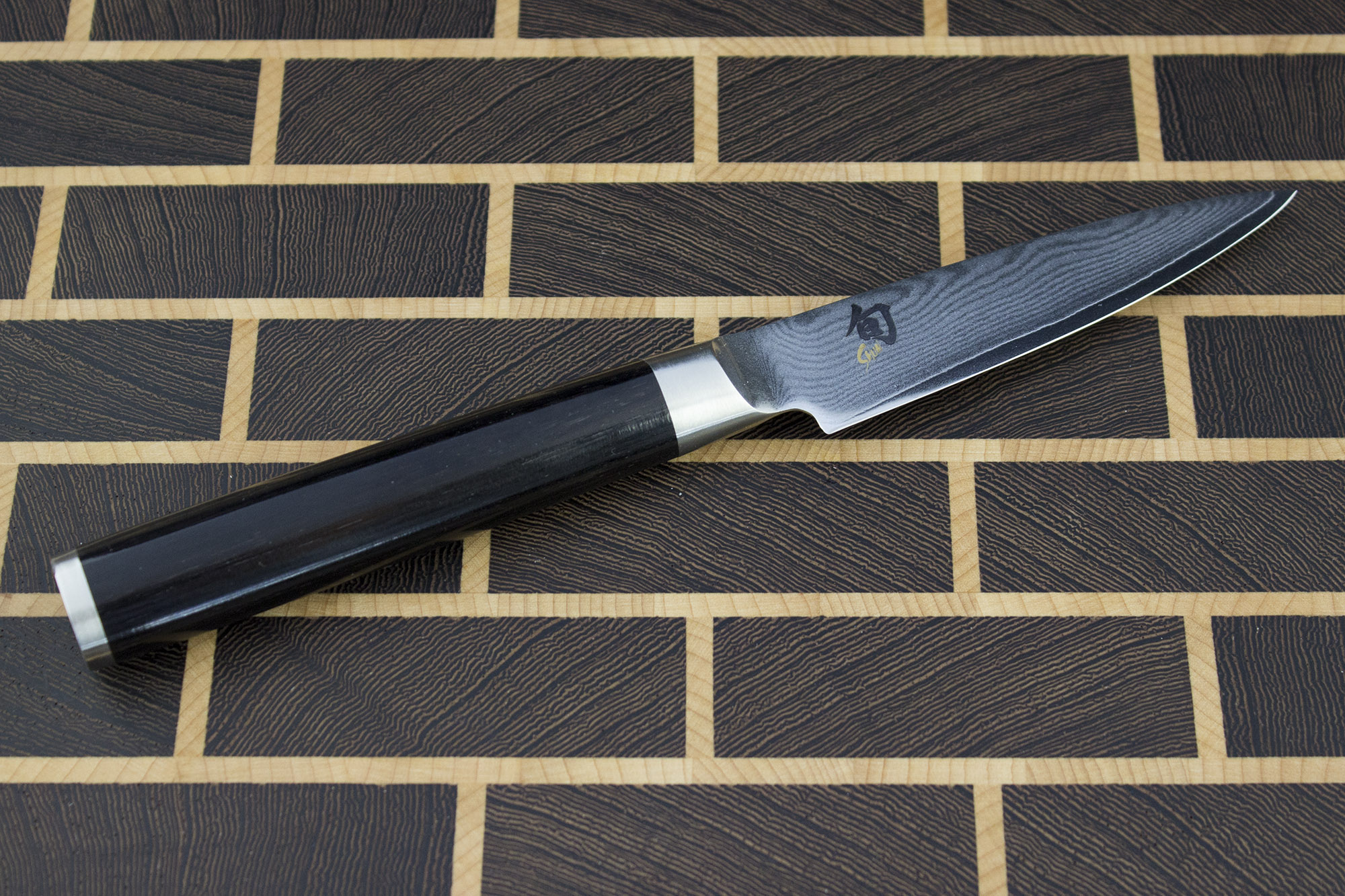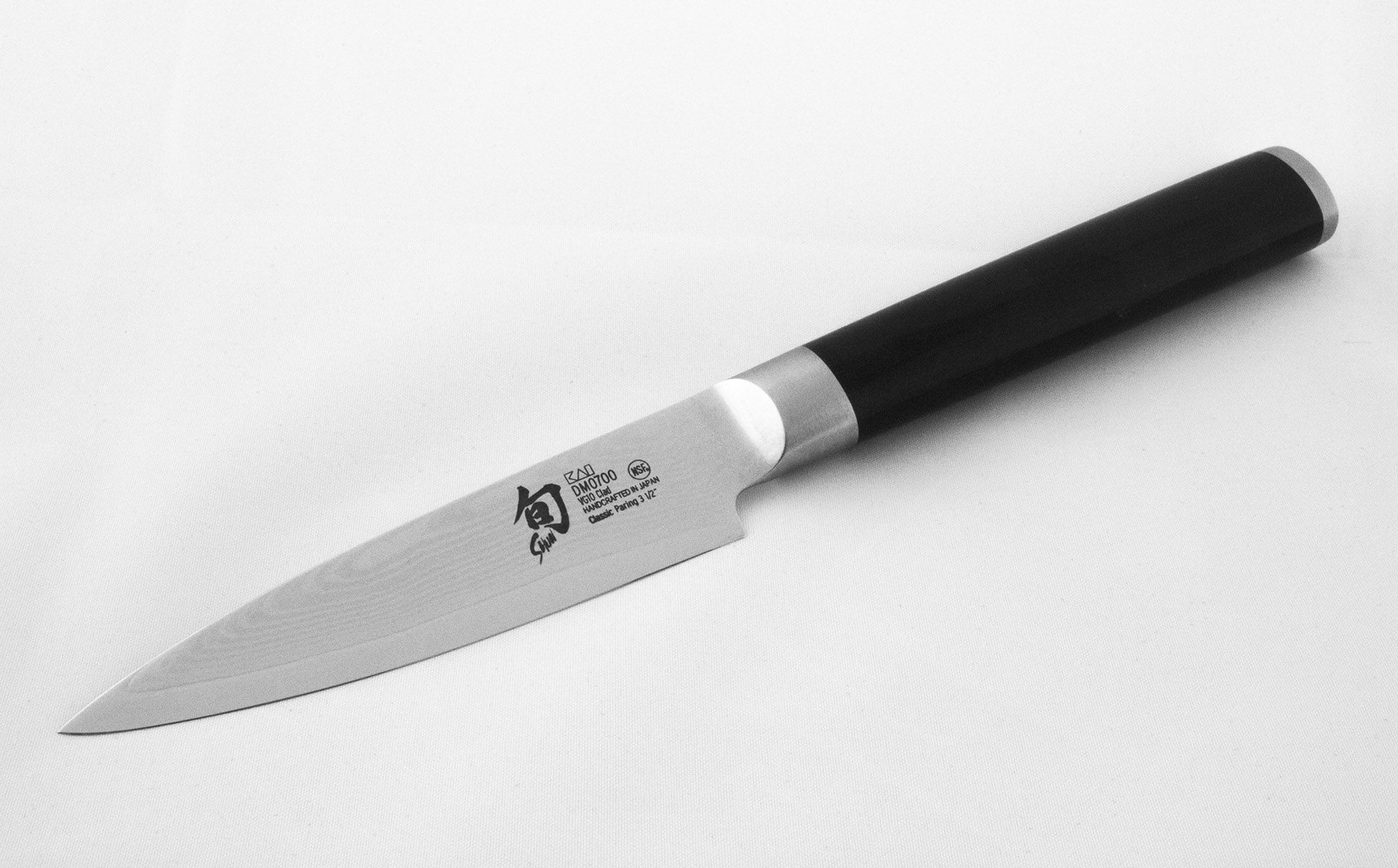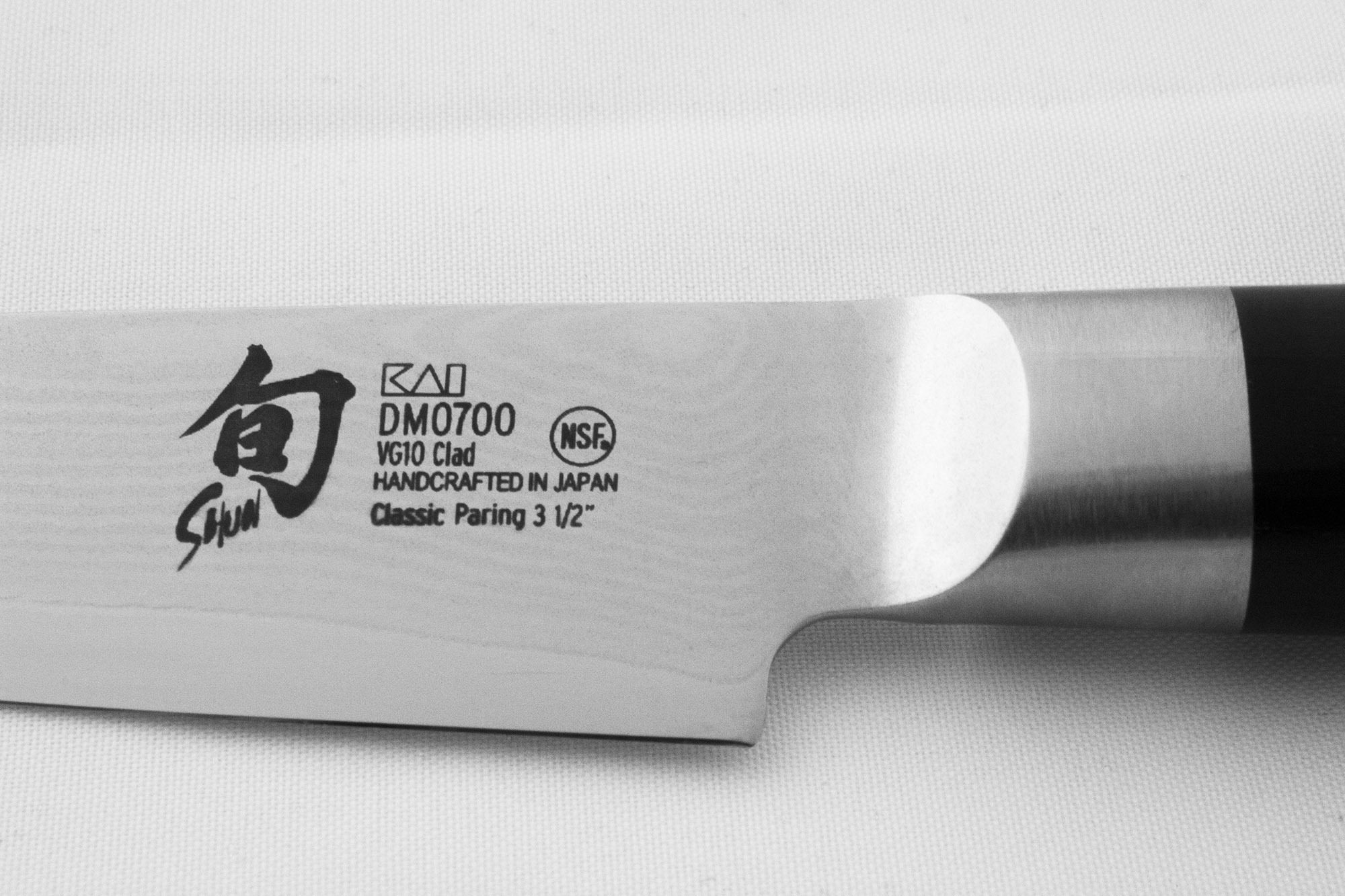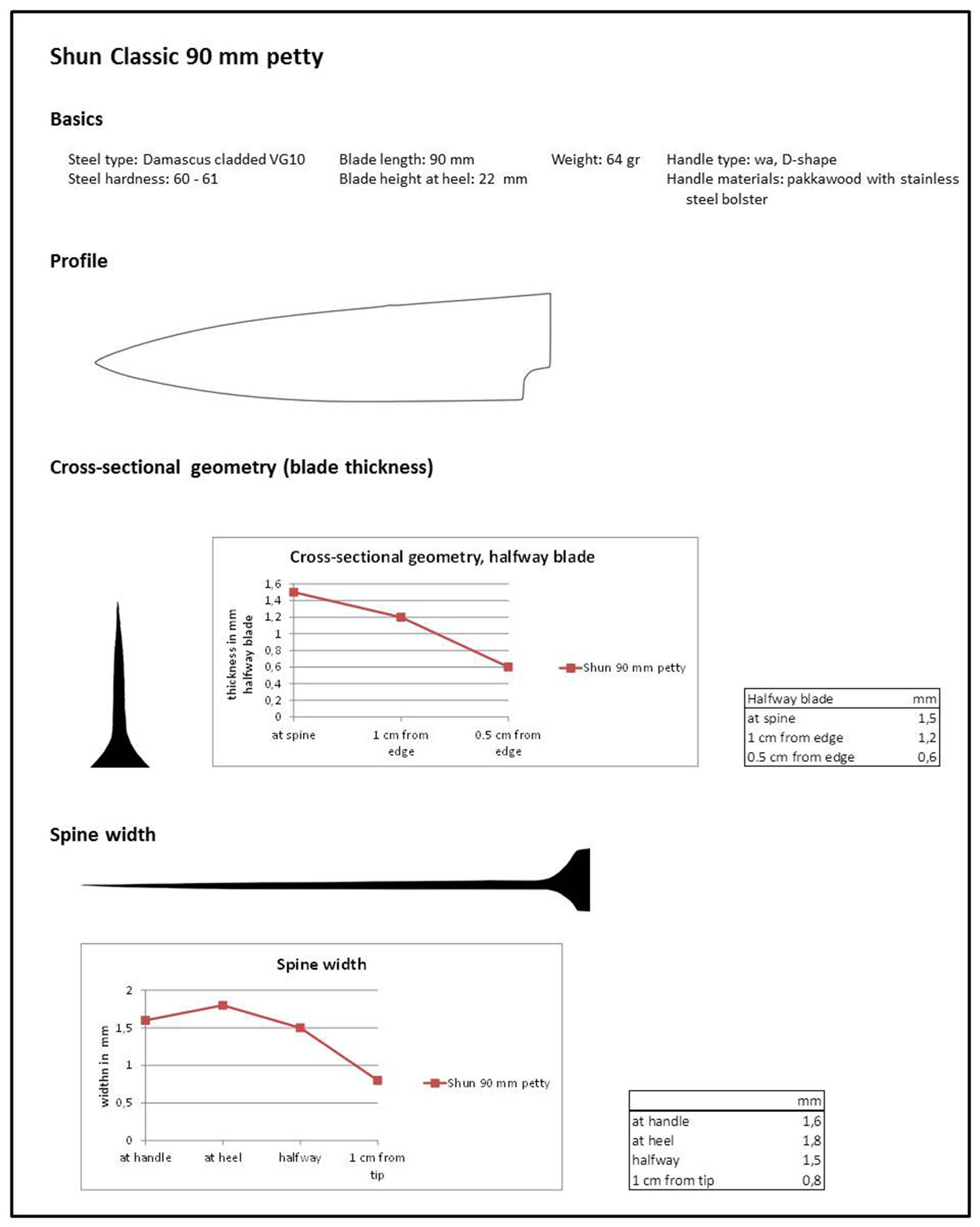I like KAI a lot for their pocket knives. The Kershaw Blur is my EDC.
I am less fond of their Shun kitchen knives, at least the Classic line. These knives are made of VG10. I have sharpened a number of these knives and noticed that more than one of them had a tendency to chip when sharpened at angles that are pretty normal for Japanese knives (12-15 degrees). Some people like the Damascus cladding on these knives, but I find it makes them too busy.

Nevertheless, the Shun 9 cm petty is my favorite petty knife. It is very ergonomic. The handle feels very good in the hand, which is important because you hold it fully in your hand when peeling something. And I like its profile, which makes it useful for a variety of tasks.


There are also Shun petty knives with a sheepsfoot profile and a bird's beak profile, by the way.

The geometry is also good: the blade is convex and near the edge it even looks somewhat concave. So it is pretty thin behind the edge.
I havent noticed any chipping on this knife, but I never sharpen it lower than at 15 degrees. My petty isn't for hard use anyway.

Factsheet
Click on the factsheet to view a larger version.

I am less fond of their Shun kitchen knives, at least the Classic line. These knives are made of VG10. I have sharpened a number of these knives and noticed that more than one of them had a tendency to chip when sharpened at angles that are pretty normal for Japanese knives (12-15 degrees). Some people like the Damascus cladding on these knives, but I find it makes them too busy.

Nevertheless, the Shun 9 cm petty is my favorite petty knife. It is very ergonomic. The handle feels very good in the hand, which is important because you hold it fully in your hand when peeling something. And I like its profile, which makes it useful for a variety of tasks.


There are also Shun petty knives with a sheepsfoot profile and a bird's beak profile, by the way.

The geometry is also good: the blade is convex and near the edge it even looks somewhat concave. So it is pretty thin behind the edge.
I havent noticed any chipping on this knife, but I never sharpen it lower than at 15 degrees. My petty isn't for hard use anyway.

Factsheet
Click on the factsheet to view a larger version.





